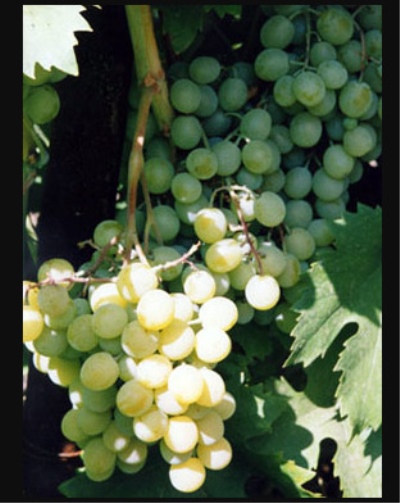
- Authors: "Vierul", Moldova
- Appointment: dining room
- Berry color: white
- Taste: harmonious, nutmeg
- Ripening period: early
- Frost resistance, ° C: -22
- Name synonyms: White beauty
- Bunch weight, g: 300
- Yield: 157 c / ha
- Flower type: bisexual
The name of Frumoasa Albe grapes is sonorous and incomprehensible. But behind it is a quite worthy advanced variety. You just need to figure out its features in order to get a good result in your garden.
Breeding history
The Frumoasa Albă variety is a product of Moldovan selection. To obtain it, Guzal Karu and Save Villar 20-473 were combined (hybridized). It should be noted that this grape also has an alternative name - White Beauty. A complex hybrid was obtained at the Vierul farm.
Description
Ripening period
This grape belongs to the early varietal group. The duration of the growing season between germination and the formation of berries suitable for picking is from 130 to 145 days. In the southern regions, you can count on harvesting fruits already at the end of summer. In the middle lane, there may be problems with the cultivation of this variety. They are especially likely when wet, cool weather sets in.
Bunches
Loose brushes are quite common for Frumoas Albe. But sometimes they reach medium density. Much depends on the specific conditions of development. The average weight of one bunch is 300 g. Not so much, but excessive loading of the bush is impossible; brushes up to 0.7 kg can often be found, and the largest ones described in the literature weigh up to 1 kg.
Berries
The variety fully justifies its alternative name - its berries are actually painted white. Outwardly, they are rounded. The mass of one fruit is usually 5-6 g. Its size is 22x24 mm. Notice:
wax bloom;
dot coverage;
the presence of 3-6 seeds per fetus.
Taste
The tasting examination gave Frumoas Alba a rating of 8.2 points out of 10. The taste itself is assessed as nutmeg, characterized by harmony. Sugar accounts for 17% of the berry mass. The acid concentration is quite high, but it does not spoil the sensations.
Yield
The variety belongs to the high-yielding group. In terms of 1 hectare, it gives 157 centners (centners) of fruits. And 16 kg of berries from one bush is quite a good result even for experienced gardeners with experience. If the agrophone is good, and the bush is old, you can achieve 40 kg. The vine ripens well, it contains from 75 to 90% of fruiting shoots.


Growing features
Landing
This vine needs a sunny plot adjoining some buildings from the south. The distance to the wall should be 1.5 m. A minimum of 2 m should be left between individual seedlings. If this requirement is violated, vigorous bushes will harm each other.

Pollination
The bisexual flowers of Frumoas Albă almost completely solve this problem. Incomplete pollination occurs in isolated cases.The attraction of bees and the planting of pollinating varieties are carried out in the same way as in the case of other varieties of fruit grapes.
The seedlings in the holes should be tilted to the north. Mulching the trunk circle is required. The cuttings are buried 15 cm deeper than in the container where they were originally cultivated. Neutral soils are encouraged. On acidic soils, it is supposed to leach the substrate.
Pruning
The optimal load for 1 bush is 35 eyes. In the autumn months, pruning is carried out up to 8 eyes. In some cases, the bush is cut into 2-3 buds instead. The choice of a particular option is determined by horticultural intuition.



Frost resistance and the need for shelter
Frumoasa Albă will be able to withstand the cold up to -22 degrees. Therefore, in most of the territory of Russia, it can only be grown in a covering culture. In the first year of development, you need to leave a maximum of 1 shoot for the winter. The bushes should be covered with soil and mulched with foliage. The use of synthetic covering materials is impractical.

Diseases and pests
Gray rot and mildew are usually avoided by the planting of Frumoas Albe. Its immunity is also not bad against damage by phylloxera and spider mites. Only occasionally problems are created by oidium and leafworm. The need for prevention still remains, of course. But with a skillful and full-fledged implementation of it, no infections will arise at all. According to some estimates, only powdery mildew can be dangerous.

If a grape is exposed to any disease or insect, this always affects its appearance.
Storage
Solid taste motivates the processing of a significant part of the harvest into wine. The transportability and keeping quality of the variety make it possible to successfully use it in industrial culture. During the storage of Frumoas Albe, it preserves its taste for a long time. Rotting and bursting are not common. The basic conditions for storage are the same as for other varieties.











































































